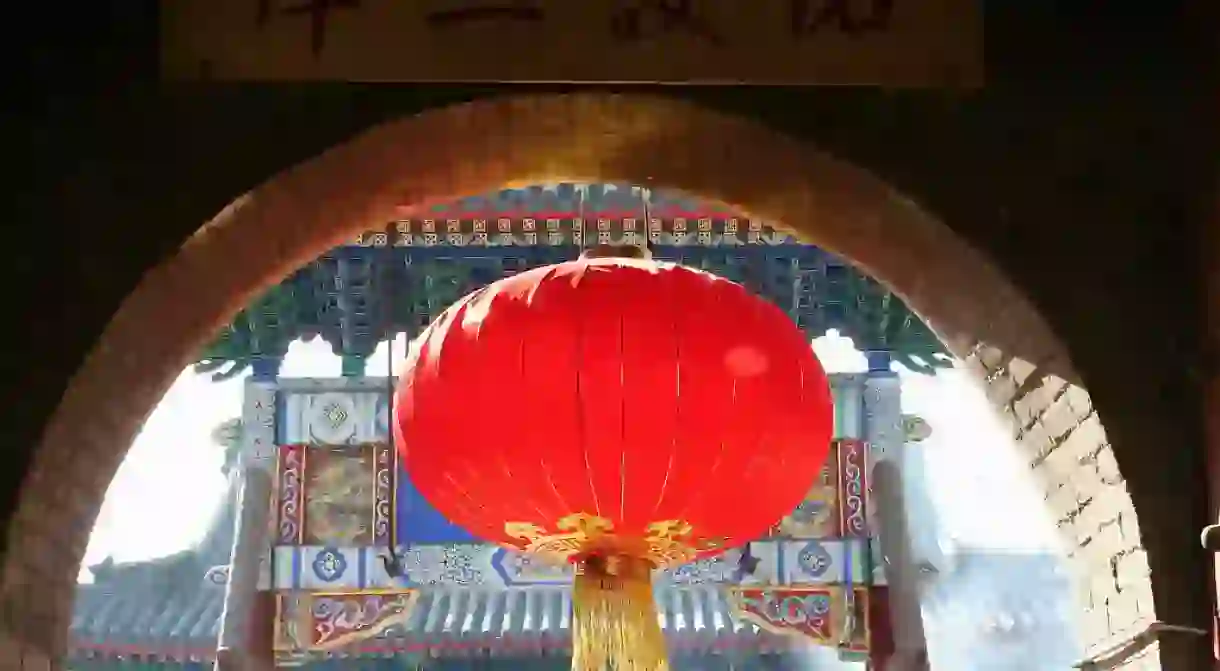Highlights of Tianjin's Ancient Cultural Street

Tianjin‘s famed Ancient Culture Street (Guwenhua Jie) is the epicenter for visitors to experience nearly all forms of Chinese folk customs. Situated in the Nankai district and boasting more than a hundred shops in one location, this street officially opened in 1986 with the Tianhou Palace at its center. If you want to know how to get the best out of your visit to this recreation of the Qing dynasty era, read on for our guide to the street’s architecture, souvenir folk crafts, and endless sampling of local delicacies.
Design
Tianjin’s Ancient Culture Street is filled with small booths, shops, and restaurants that are modelled after the independent merchandisers of the Qing dynasty. Pay close attention to these buildings and you’ll see that they’re constructed with ‘blue bricks’ – notice how the windows and doors are decorated with colorfully painted images. These paintings illustrate stories of mythical, legendary and historical figures. Some of these designs reference China’s most recognized classic novels and stories, including The Dream of a Red Mansion and The Song of Eternal Sorrow. Gongbi (Chinese-style drawings of flowers and birds) paintings are also visible throughout the street.

Shopping and entertainment
Antiques
Old-fashioned merchandise is fully on display here. Look for relics of artwork, antiques and old furniture, as well as calligraphy sets dubbed “Four Treasures of Study” (ink stick, brush, paper, and inkstone), not to mention jade jewelry, classic literature, and traditional Chinese New Year paintings.
Folk gifts
Traditional handmade craft souvenirs of the past 300 years include painted clay sculptures of revered icons, illustrated paintings on scrolls, Tianjin Wei kites, carved bricks, dolls and toys, porcelain, and embroidered fabrics.

Leisure venues
Make your way to the open stage in front of Tianhou Palace, and you can see locally-produced drama shows and live performances here for free. Aside from this open-air theater, Ancient Culture Street is full of other entertainment venues, mainly with restaurants and tea houses.
Kiosks and food stands
The street is lined with vendors and is a great place to sample local delicacies and snacks. Look for tomatoes on sticks, and local favorites like tea soup, goubuli steamed dumplings, erduoyan (‘the ear-hole cake’), and fried cakes, as well as roasted sweet potatoes.

Tianhou Palace
This building has a few aliases – “The Queen of Heaven Palace”, “Niangniang Palace” – and is an ancient temple that honors the Chinese sea goddess, Mazu. First constructed in 1326 under the Yuan dynasty, it’s one of the three major surviving Mazu temples in China and was a center to pray for the safety of mariners at sea. It was also a place to honor marines (fishermen, soldiers, sailors) who sacrificed their lives, and was used as a venue for social gatherings. This temple inspired the constructions of other Tianhou palaces across China. Today, various performances are still held here to give thanks to Mazu, as well as an annual celebration held on the Sea Goddess’ birthday.
Annual fair
If you’re lucky enough to be in Tianjin during the week of March 23, ou’ll stumble upon the Huanghui fair. This renowned festival celebrates the birthday of Mazu, the Goddess of the Sea, at Tianhou Palace. The festival has been a fixture since the Qing dynasty and lasts four days. Filled with lion dances, dragon lanterns and stilt performances, make sure you’re on Ancient Culture Street for this one.













